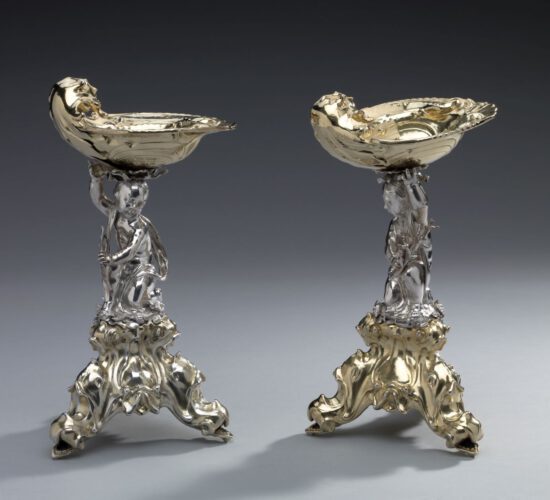Summary of binding opinion
The Restitutions Committee has assessed the application submitted by the people entitled to the estate of Emma Budge (1852-1937) for restitution of two salts made by the artist Johannes Lutma (1584-1669). It emerged from research conducted by the Expert Centre Restitution (ECR) that the salts came from the private collection of the Jewish Emma Budge. It has also become sufficiently plausible that her beneficiaries lost possession of the salts involuntarily in Germany after 1933.
It is known that, at some unknown moment, the salts became part of the art collection of the Budges, who lived in Hamburg. After the Nazis came to power, Emma Budge had a number of wills drawn up relating to the disposition and sale of her art collection, but her executors were unable to implement her wishes after her death in 1937. Contrary to her instructions, the salts, together with another pair of salts that are the same, went under the hammer in Berlin at the Paul Graupe auction house, which had meanwhile been Aryanized. The two pairs of salts were purchased by a person called ‘Graetzer’, about whom no details are known.
The salts were subsequently held successively by the antiques dealer A. Vecht of Amsterdam, the art collector H.P. Doodeheefver of Hilversum and the art and antiques gallery Firma D. Katz of Dieren. Thereafter they came into the possession of W.J.R. Dreesmann. This businessman and collector built up a large collection of Amsterdam-related cultural material. In March 1960 Amsterdam City Council bought the two pairs of salts in a sale at auctioneers Frederik Muller in Amsterdam. The Amsterdam Museum received one pair of salts on loan. The City Council sold the other pair of salts to the Dutch State for the Rijksmuseum Amsterdam, where the objects are currently present.
Emma Budge and her beneficiaries, because of their Jewish descent, belonged to a persecuted population group and the loss of possession happened during the Nazi regime. On the grounds of criterion 3.1 of the applicable assessment framework, the Committee must assume that the loss of possession was involuntary, unless the facts expressly show otherwise. The changes that Emma Budge made to the provisions in her will cannot be considered in isolation from the political developments in Germany and rise to power of the Nazi regime. In view of the pressure exerted on the executors, which resulted in them acting in a way that was very different from what Emma Budge’s will intended, having the salts sold at auction was not a free choice. It is furthermore plausible that the Budge beneficiaries did not have free disposal of the proceeds of the sale as a result of the severe anti-Jewish measures. The loss of possession was therefore not voluntary.
The Committee has ruled that Amsterdam City Council should restitute the pair of salts made by Johannes Lutma, which are currently in the Amsterdam Museum, to the people entitled to the estate of Emma Budge.
